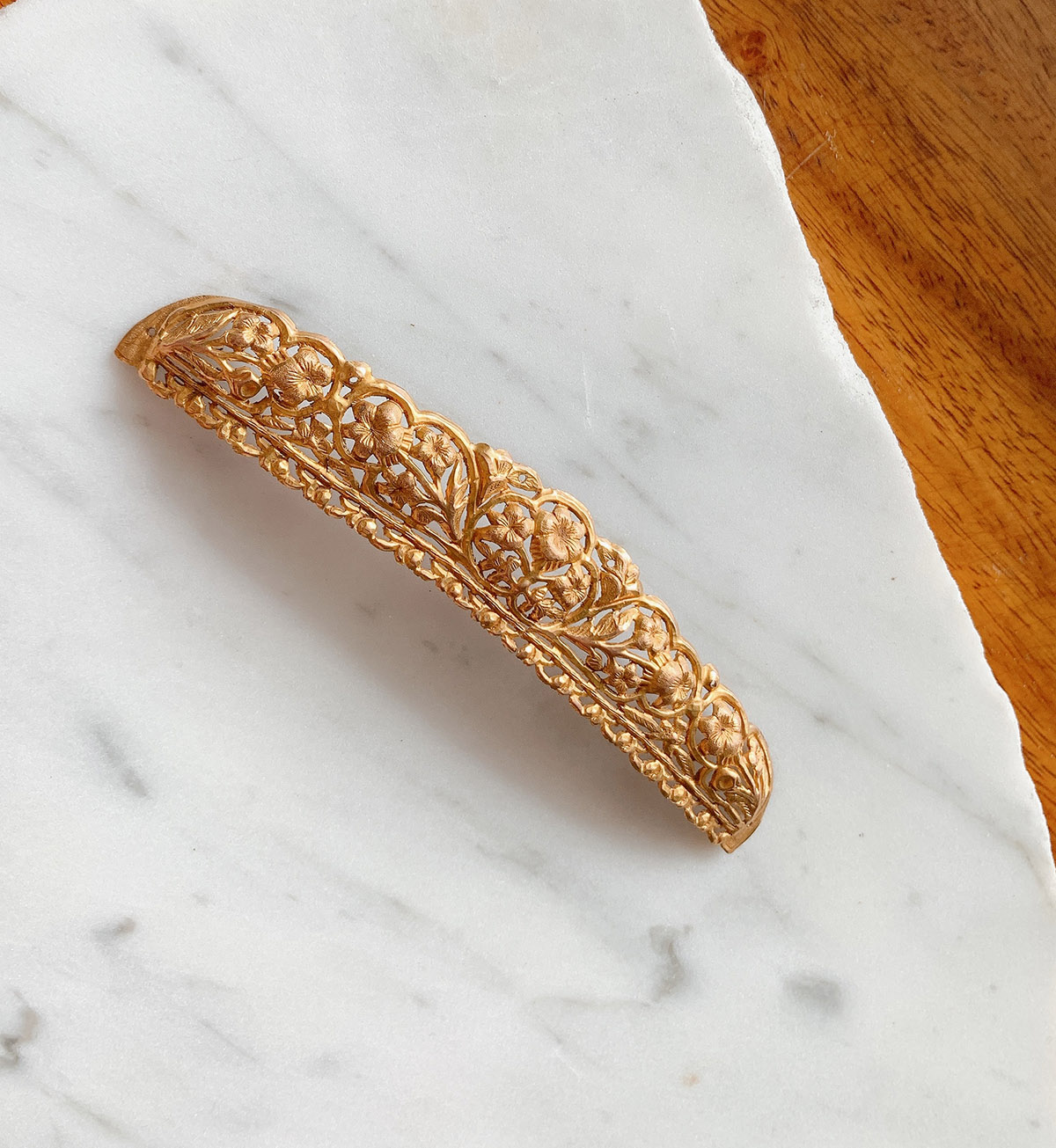It is not hard to fall in love with jewelry—especially if it is antique jewelry. The intricacy of detail and craftsmanship that goes into each piece made over a hundred years ago is drastically different from the jewelry that we have today. They just don’t make it like they used to. Antique jewelry also has what collectors call “antique value,” or importance that is based on quality, who the maker is, its current condition, and rarity—not to mention the history that each piece of jewelry carries. As artisans who practiced the age-old techniques in traditional jewelry-making start to fade one by one, the more the prices of antique or vintage jewelry inevitably rise due to the increase in demand.
While discerning jewelry fans who want to get a piece of the action are striving to acquire their own antique pieces, deceitful manufacturers are busy making reproductions that make their way into the antique jewelry market.
Reproductions are jewelry pieces disguised as original antiques. They have been made in recent times to appear close to the actual. On the other hand, antique jewelry refers to pieces that are at least a hundred years old. An untrained eye can hardly see the difference between a genuine artifact and a reproduction. But if one looks closely enough, there is much to be spotted. Below we list five ways to spot reproductions when buying antique jewelry:
Determine what period the piece of jewelry was made
It is of utmost importance that one does his or her own research and carefully assess the piece of antique jewelry in question before investing in it. According to Ma. Angelica Bermejo, owner and designer of Philippine jewelry brand Ma. Angelica, one must look at the jewelry’s period style and any markings such as maker hallmarks, gold karatage stamping, and the like when trying to determine whether a piece is an authentic antique or a reproduction.
A serious jewelry enthusiast must also evaluate the size and shape of the piece and compare it to the characteristics of other jewelry common during the time it is believed to have been made. An example of this would be how beads can tell the age of a Tamborine necklace. These beads were the most ornate of beads typical during the Spanish colonial period and combine hollow filigree spheres with black glass, pearl, or orange coral beads (Sta. Maria & Laxina, 1983). Another characteristic one should watch out for is how the edges of antique jewelry have been aged by time. Therefore, they are no longer as sharp as reproductions or new pieces. The plating on a more recently made reproduction would also appear more vibrant than that of an aged antique.
Find out about the item’s provenance
Imagine owning a piece of jewelry that has a signature or engraving of the brand or artisan who made it. Perhaps it once belonged to an actual princess or a celebrity. Provenance refers to the documentation of the item’s origins and previous owners. Believe it or not, the journey of a piece of jewelry can very well add to its value when being appraised in the pre-owned market. Documentation such as this can prove the age of a piece. Therefore, differentiating it from reproductions that lack history.
Identify the material of the jewelry
The kind of material used to create a piece directly affects its value and whether or not it is an authentic antique. An example would be the iconic Payneta comb that used to adorn the hair of Filipina women in Spanish-colonial times.
Paynetas were initially made using carabao horn in the 1820s. By the turn of the century, they started using tortoiseshell as an alternative to the heavier carabao horn. Tortoiseshell also glides better on the hair.
INSIDER INFO: Taking from our first tip, make sure the item’s historical material matches the date these items are claimed to be from! By dating pieces by the evolution of their design, you can use this as a starting point to spot authentic pieces.
Source of the piece
Another factor to consider when trying to determine whether a piece is a reproduction would be the credibility and trustworthiness of the person selling the jewelry to you. This is of great importance, and it is best to keep track of whether what they say is consistent with the actual piece.
Jewelry technique utilized
The equipment used to make antique jewelry are very different from those currently being used today. The workmanship and techniques that the artisans of yesteryear used to make their creations can very well tell the period they were made and influence their current value. The patina of an antique piece is one of the things one must consider. Most collectors prefer to keep their jewelry in its original plating. This is regardless of any imperfections it may have. When pieces are cleaned or refilled, markings may be covered and patina is lost.
While it is easy to be enamored with a seemingly good find, one must always be cautious about where his or her hard earned money goes. Assessing whether a piece of jewelry is an original antique and not a deceiving reproduction is extremely vital when making a jewelry purchase.
Source: Sta. Maria, F., & Laxina, B.A. (1983). Household antiques & heirlooms. GCF Books.
Edited by:
Kitkat Torres
Arianna Morales



